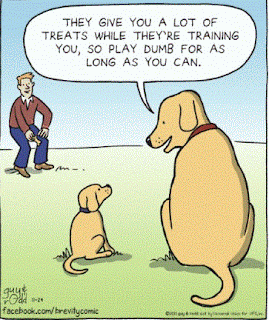Engagement in
some organizations just seems to happen naturally. In others it seems uneven and difficult to
sustain. People seem to be treading water, there’s no real enthusiasm, momentum
or positive attitude. But this
disengagement is not always visible. A
paper written by Glint entitled “The Chemistry of Engagement” reveals the
data-driven strategies of innovative companies who have adopted emerging technology
of real-time employee engagement.
There are
many organizations that don’t realize they have an engagement problem until
they have a retention or performance problem. They gain understanding from
these issues, but often it is too little too late.
Consider
these stats from recent research:
- 77% of CEOs feel they don’t have the right systems to address the issue of employee engagement (Deloitte)
- 79% of CEOs believed they have a significant retention and engagement problem (Deloitte)
- 18% of employees are actively engaged, only 30% of employees are engaged, 52% are disengaged (Forrester Research)
Here are
three reasons often given by HR leaders for these above findings:
- There are challenges staying connected as the company grew and became more successful.With rapid growth there are so many new people that old employee surveys weren’t working
- The diversity and disbursement of employees makes it difficult to maintain cohesiveness and engagement.
- The wide variety of employee types (salaried, hourly, technical, customer facing, main office, remote etc.) makes it difficult to keep them all engaged
- With constant management changes because of growth there is a lack of consistency.
One answer to
all the above according to Glint is real-time measurement using real-time
technologies. If the problem is present,
you need present time data to solve it.
But three factors have kept companies
from measuring in real-time:
1. The annual
survey because it is still just annual
2. It’s not just an HR thing. While HR has been the owner of measuring
engagement and the strategies to use to improve it, it’s very difficult to
drive behaviors across large and diverse organizations.
3. An
issue of money or time. Many companies are forced to limit consultant based
research to once a year, and if they do it themselves, the time and manpower to
do it right can be very lengthy thus mitigating the “real-time” issue.
The answer,
according to Glint, is to use the platform they have developed that creates
programs for measuring and improving engagement, understands which factors
drive employee satisfaction and empowers managers with interactive dashboards
to lead them to action.
While this
certainly sounds like a workable approach to improving engagement, it leaves
out a very important piece of the puzzle.
To change behavior you need to include positive reinforcement to turn
those changes into habits. Employee
recognition and rewards has always been a driver of employee engagement.
For
more information on Ultimate Choice Inc.’s products or services or other white
papers please contact us at Ultimatechoiceinfo@cox.net


